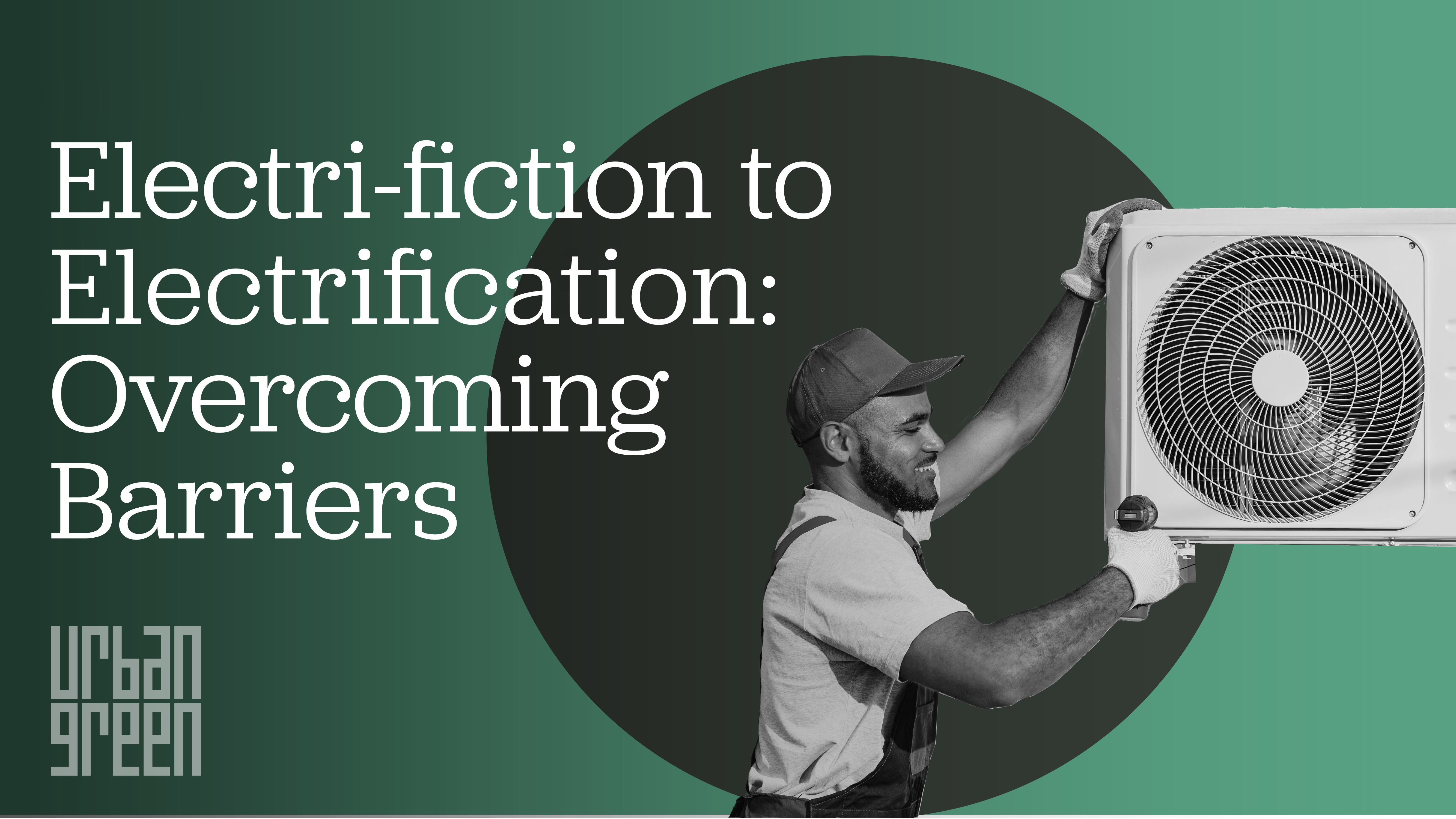Our 2022 conference asked how we can overcome the remaining barriers to electrification.
Original publication by Urban Green Council • November 29, 2022
If you’ve followed the conversation around electrification, you’ve probably heard at least one of the following arguments as to why it supposedly can’t work: the grid is too dirty, the grid doesn’t have capacity, the workforce isn’t ready and there isn’t the political will to act. While these arguments do point to real challenges, they are not insurmountable. Urban Green’s 2022 conference, in the words of CEO John Mandyck, took an honest look at “where there are barriers to electrification, and how we will continue to knock them down.”
Electrifying up the code
In the first session of the day, moderator Molly Dee-Ramasamy of Jaros, Baum & Bolles led a conversation about how the energy code is driving electrification. The three panelists—Diana Burk from New Buildings Institute, Chris Corcoran from NYSERDA, and Emily Hoffman from the NYC Department of Buildings—anticipated the path that the code will take and what the industry should expect at the city and state levels. NYS municipalities may jump straight to requiring all-electric buildings, like NYC’s Local Law 154, or they may adopt “electric-ready” requirements that pave the way for future electrification. As described by Burk, New Buildings Institute has developed a decarbonization toolkit that can make it even easier for jurisdictions to adopt electrification-centric codes. The main takeaway for practitioners: codes will continue to require buildings to be even more efficient and electrify sooner rather than later.
Rise and shine, it’s multifamily time!
Moderated by Loic Chappoz from NYSERDA, the second session covered the unique challenges of decarbonizing multifamily buildings. Multifamily building owners are understandably hesitant to lead this transformation and be the first to try out new technologies. As a result, this sector is moving at a slow pace. For instance, in one of the only examples panelist Kelly Dougherty of First Service Energy could name, a co-op chose to test out a heat pump in a single apartment for a year before embarking on a system-wide retrofit. Dougherty, along with Jared Rodriguez of Emergent Urban Concepts and Cecil Scheib of NYU, stressed the need for long-term planning and decarbonization assessments to get these projects off the ground. As laws and codes get stricter, the cost of doing nothing will add up.
It’s time to think outside the box—or as Rodriguez comically framed it, to get out of our “mind prisons”— and develop creative solutions. In keeping with the advice from session one, panelists all agreed that it’s best to start now; an incremental approach makes the process more manageable.
The risk and reward of heat pump water heating
In the last session of the day, five experts piped up to discuss their experiences working on heat pump water heater projects for several new multifamily buildings across Brooklyn. Moderated by Nicolve Ceci of Steven Winter Associates, this panel featured Sara Bayer from Magnusson Architecture and Planning, Ryan Cassidy of RiseBoro Community Partnership, Avery Gray from Bright Power and Grayson Jordan of Paul Castrucci Architects.
From reducing the lengths of refrigerant lines to navigating zoning requirements, panelists did not shy away from describing the hurdles and dead ends that they encountered. But the group agreed that each challenge, however frustrating in the moment, provided a valuable opportunity to get creative. Additionally, these projects offered the chance to reestablish relationships with contractors, hear their input early on and get the entire project team working together. Bayer’s advice for tackling new challenges like this is to get comfortable with uncomfortable meetings. Your team will be figuring it out together, so it may get messy, loud, quiet and everything in between, but in the end, “It’s so worth it.”
Only one way forward
Although there are very real challenges to electrification, NYC’s Chief Climate Officer Rit Aggarwala emphasized that “we are going to have to electrify nearly every building in the city, because the future of our city and the future of our planet are on the brink.” Through programs like the NYC Retrofit Accelerator, stakeholders across the industry have been working tirelessly to make this happen. Renewable projects are underway to transform the grid, classes are being developed and delivered to train the workforce, and financing and policy solutions are becoming available, but it will take all of us to make electrification a reality.
Echoing the words of the experts on stage, our movement is only as strong as our community, and our fight against climate change will be won “window by window, insulated pipe by insulated pipe, and heat pump by heat pump.”
Further Reading
Air source heat pumps: Not just a pipe dream
Air source heat pumps can help lead the transition to electrified domestic hot water systems in NYC.
Retrofits in occupied buildings
Hear from Trevor Smith, a construction manager with extensive experience in completing design-build energy projects in occupied buildings.
$20B building energy retrofit market
Local Law 97 sets expectations high, setting strict carbon caps for buildings starting in 2024. What will make this happen?
